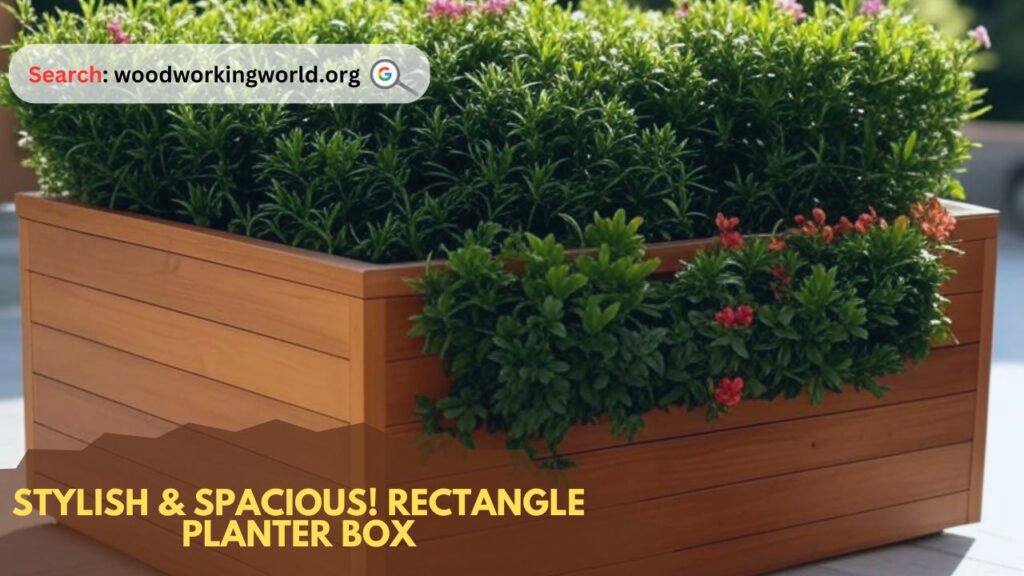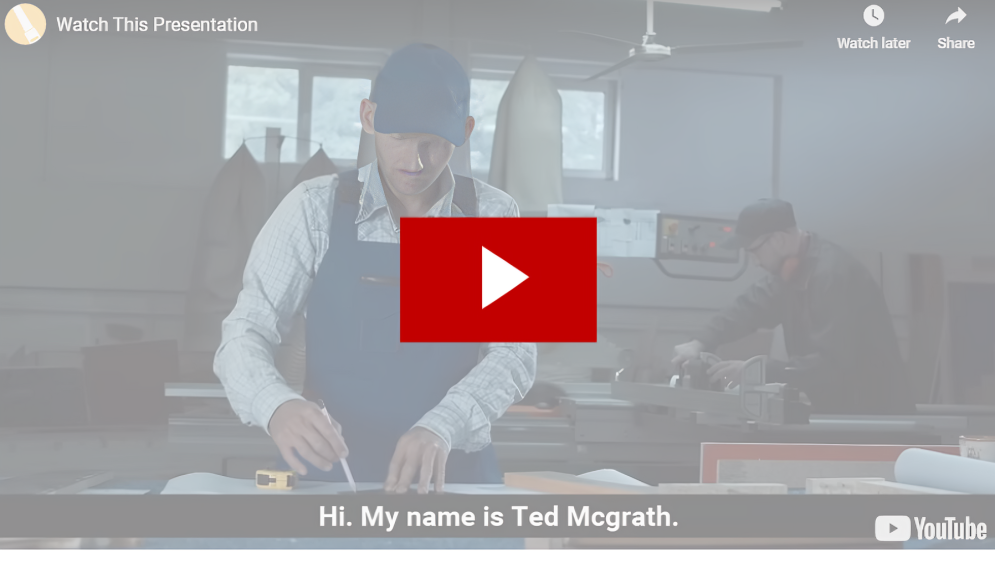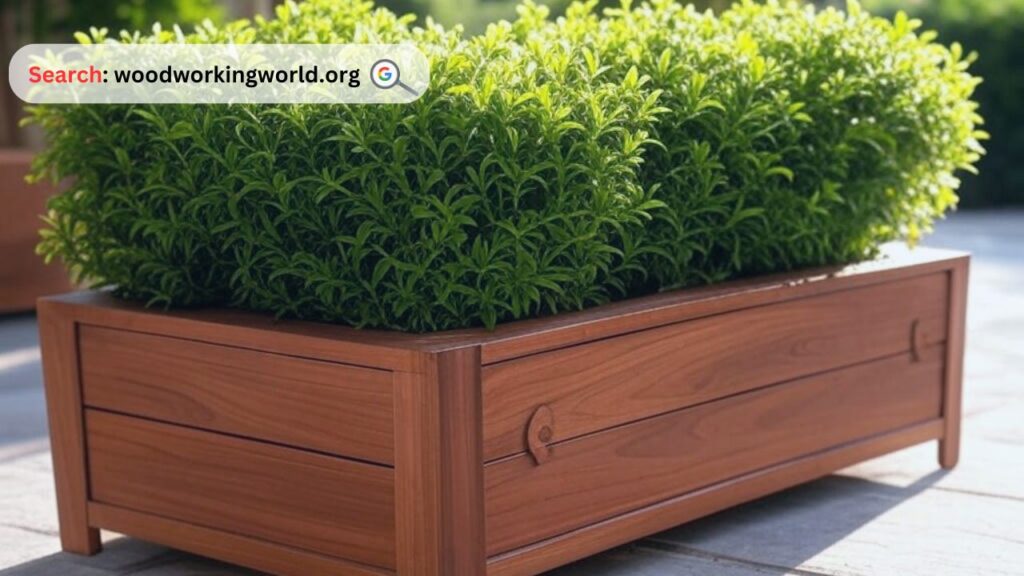Stylish and spacious, this rectangle planter box is perfect for any garden or patio. Discover the best designs, materials, and DIY tips for a stunning setup!
A rectangle planter box is a versatile and stylish addition to any home or garden. Whether you have a small balcony, a spacious backyard, or an indoor setting, these planters offer the perfect blend of aesthetics and functionality. They allow you to grow flowers, herbs, and even small vegetables while maximizing space and enhancing the beauty of your surroundings.

In this article, we will explore the benefits of rectangle planter boxes, the step-by-step process of choosing and setting up one, a comparison table of various planter materials, and a FAQ section to answer common queries. By the end, you will have all the information you need to make an informed decision on the best rectangle planter box for your needs.
Benefits of a Rectangle Planter Box
- Space Optimization: Perfect for small spaces like balconies, patios, or indoor areas.
- Stylish Aesthetics: Complements modern, rustic, and classic home decor.
- Versatility: Can be used for flowers, herbs, succulents, and even small vegetable gardens.
- Easy Maintenance: Provides better organization and accessibility for watering and pruning.
- Better Drainage: Often designed with proper drainage holes to prevent root rot.
Build 16,000+ Projects with Step-by-Step Plans—No Big Workshop or Costly Tools Needed! Start Now!
Step-by-Step Guide to Choosing & Setting Up a Rectangle Planter Box
Step 1: Determine Your Needs
Before selecting a planter box, consider the following:
- Location: Will it be placed indoors, outdoors, on a balcony, or in a garden?
- Size: Choose dimensions based on the number and type of plants you want to grow.
- Material: Decide between wood, metal, plastic, or concrete based on durability and aesthetics.
Step 2: Choose the Right Material
Different materials offer unique benefits. Here’s a comparison:
| Material | Pros | Cons |
|---|---|---|
| Wood | Natural look, biodegradable, good insulation | Requires sealing and maintenance |
| Metal | Durable, stylish, modern appeal | Can rust without proper treatment |
| Plastic | Lightweight, affordable, low maintenance | May degrade under harsh sunlight |
| Concrete | Sturdy, weather-resistant, elegant | Heavy and difficult to move |
Step 3: Pick the Right Size and Shape
- Small (12-24 inches): Ideal for indoor plants and small herbs.
- Medium (25-36 inches): Great for flowers and larger herbs.
- Large (37+ inches): Perfect for vegetable gardens and multiple plant varieties.
Step 4: Ensure Proper Drainage
A well-drained planter prevents water accumulation and root rot. Follow these tips:
- Choose a box with built-in drainage holes.
- Use a layer of gravel or pebbles at the bottom.
- Consider adding a drainage tray for indoor use.
Step 5: Select the Right Soil and Plants
- Use high-quality potting mix for better aeration and nutrients.
- Choose plants based on sunlight availability.
- Consider companion planting for improved growth.
Step 6: Planting & Maintenance
- Gently remove plants from their nursery containers and loosen roots.
- Space plants according to their growth requirements.
- Water regularly but avoid overwatering.
- Fertilize every few weeks for healthy growth.
Step 7: Positioning Your Planter Box
- Place it in an area with adequate sunlight.
- Ensure accessibility for watering and pruning.
- Consider using plant stands or risers for better airflow.
Expert tips on Woodworking 🌿📦 Watch now!

Stylish Design Ideas for Rectangle Planter Boxes
Modern Minimalist
- Use sleek metal or concrete planters.
- Opt for neutral-colored plants like snake plants or succulents.
Rustic Charm
- Choose wooden planters with a distressed finish.
- Plant colorful flowers like marigolds or lavender.
Urban Balcony Garden
- Use vertical stacking for limited space.
- Grow herbs like basil, thyme, and mint.
Indoor Elegance
- Select decorative plastic or ceramic planters.
- Add trailing plants like pothos or ivy for a lush effect.
Expert Tip
“The best gardens are not just about the plants, but about the containers that house them. A well-chosen planter can elevate the beauty of any space.” – Jane Greenfield, Horticulturist
Frequently Asked Questions (FAQs)
Q1: What is the best material for a rectangle planter box?
A: It depends on your needs. Wood is eco-friendly, metal is stylish, plastic is affordable, and concrete is highly durable.
Q2: How do I prevent my wooden planter from rotting?
A: Use a protective sealant, line the interior with plastic, and ensure proper drainage to extend its lifespan.
Q3: Can I use a rectangle planter box indoors?
A: Yes! Just ensure it has a drainage tray to prevent water spills and choose plants that thrive indoors.
Q4: What plants grow best in a rectangle planter box?
A: Herbs, succulents, flowers like petunias and marigolds, and vegetables like lettuce and tomatoes thrive in these planters.
Q5: How often should I water my planter box?
A: Watering frequency depends on the plant type, soil moisture, and weather conditions. Check the soil regularly and water when the top inch feels dry.

Conclusion
A stylish and spacious rectangle planter box is an excellent investment for plant lovers. Whether you’re looking to enhance your indoor decor or create a vibrant outdoor garden, the right planter can make all the difference. By considering material, size, drainage, and plant choices, you can create a beautiful and functional garden space that complements your lifestyle. Happy planting!
Click To Order Teds Woodworking With A 60-Money-back Guarantee From – Official Website